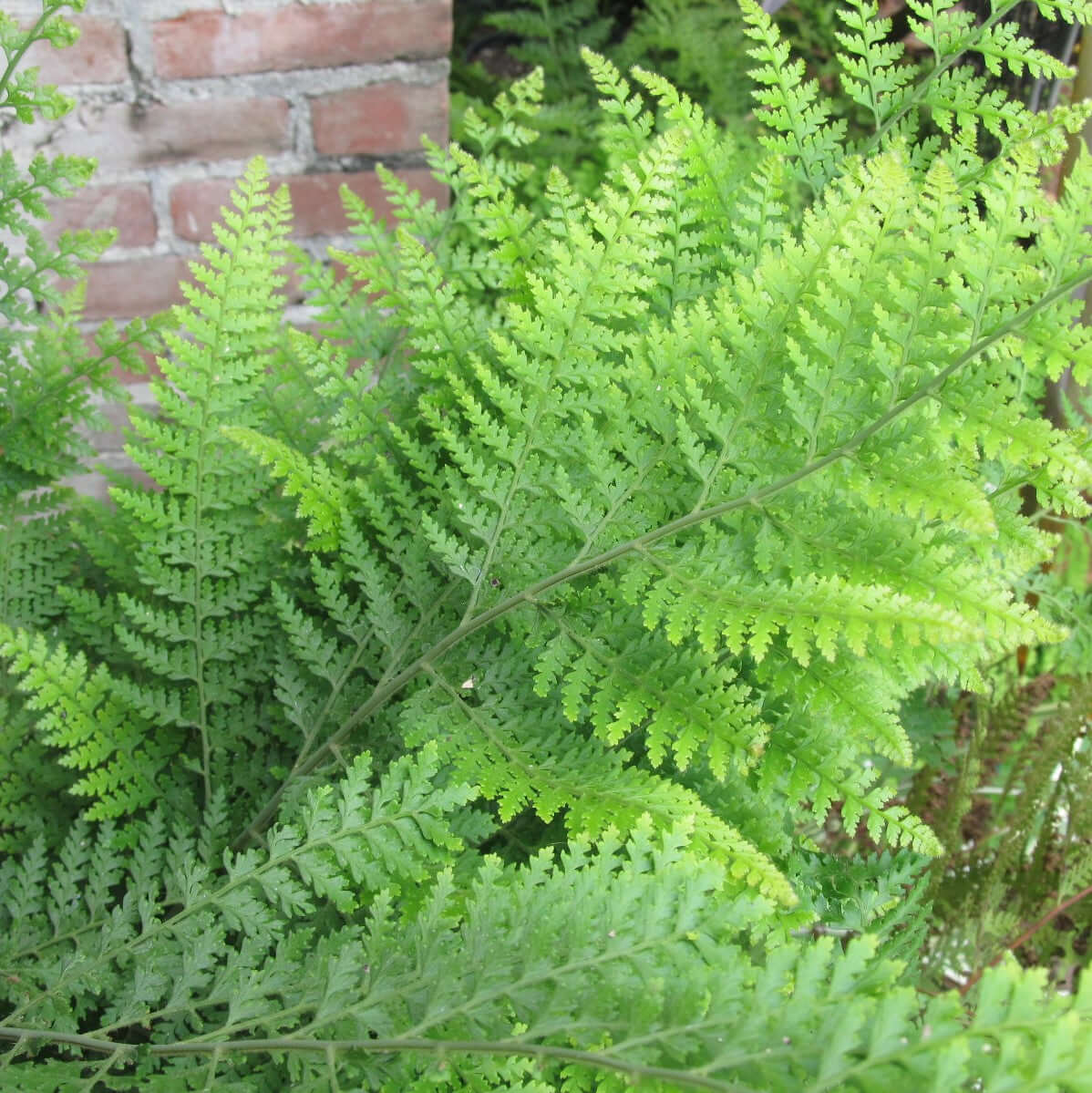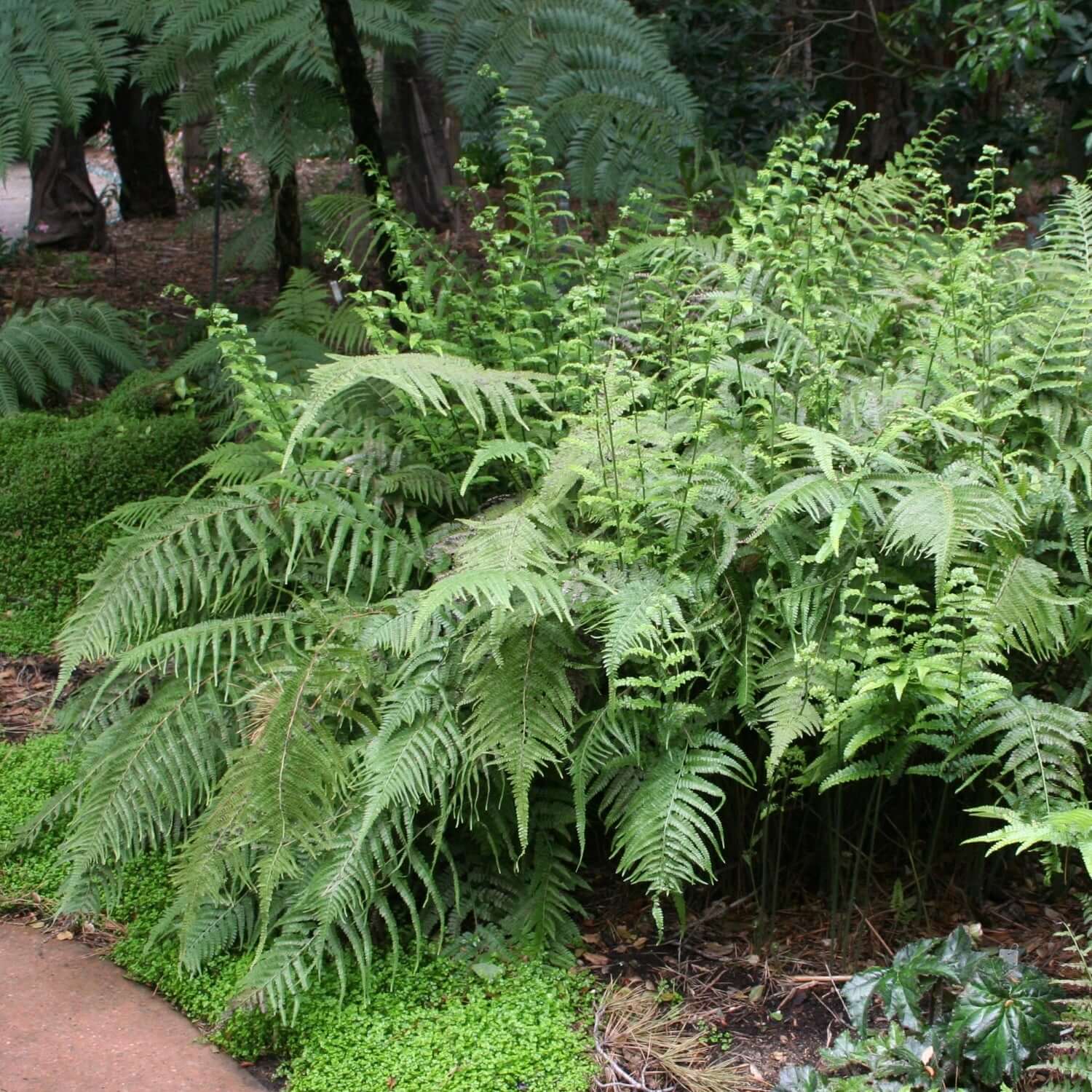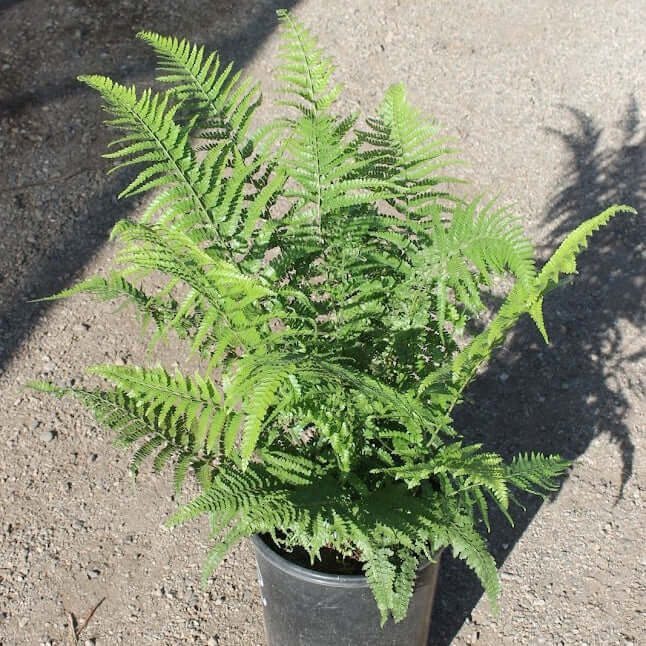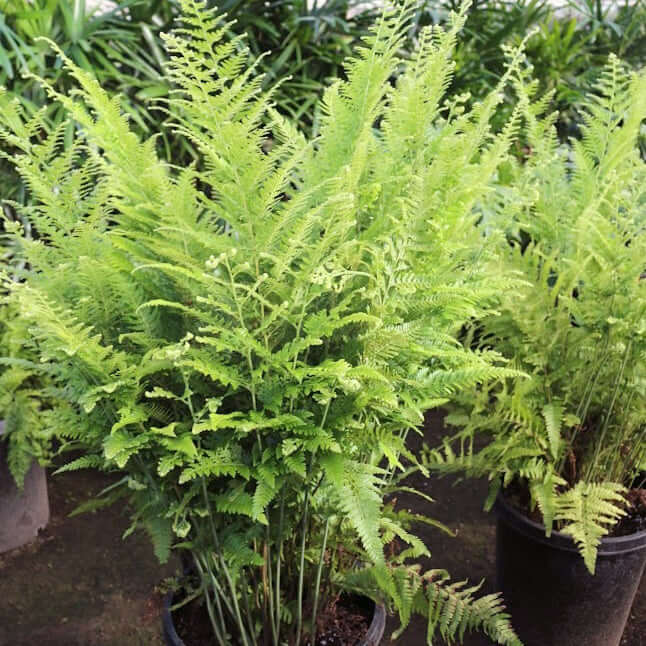
Lace Fern
Microlepia strigosa
Delivery
24-hour money-back guarantee
Free delivery on orders over $349
Big Project? Call 888-444-1126 for bulk rates!
Microlepia strigosa is a graceful fern with delicate green lacy fronds, yet tough enough to tolerate drier conditions than most ferns. The soft-textured triangular leaves resemble intricate lacework and slowly spread by rhizomes to form lush billowing clumps. In California, Lace Fern is a popular garden fern.
Lace Fern is a medium-large fern that slowly spreads 3 ft. wide or more by clump-forming rhizomes. This semi-hardy to semi-tender evergreen fern has finely-divided, bright green, gracefully arching fronds that grow close together for a full-foliage look. The new growth is a light apple-green or chartreuse color that matures to a darker green and adds colorful interest in the landscape.
Microlepia strigosa is easy to grow and is an excellent fern for shady areas in the landscape. Its short-creeping, clumping habit makes Lace Fern an excellent choice for borders or foundations. And the lacy foliage provides a fine, soft texture that looks good in a woodland or tropical garden, or on the porch or patio in containers.
Its delicate appearance and adaptability to drier conditions, make Lace Fern a popular choice for the California landscape. Microlepia strigosa is a versatile and low maintenance fern that's perfect for adding soft, lush texture in a shady garden.
What is the Lace Fern and how big will it grow?
What kind of light does Lace Fern prefer?
What are the watering and soil requirements?
What about humidity and temperature?
1-3 ft.
3-4 ft.
Moderate
Perfect Your Landscape With Expert Help
Customize your yard with confidence. Schedule your free consultation today and bring your outdoor space to life!



